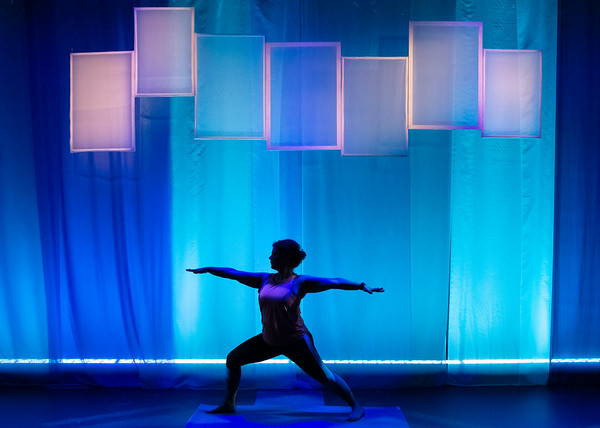Review: Indeed, There Are No Small Parts: "2nd Murderer" is a Dark Delight
2nd Murderer
Written by Kanika Asavari Vaish
Directed by Frankie DiCiaccio
Presented by SoHo Shakespeare Company at The Flea Theater
20 Thomas Street, Manhattan, NYC
October 9-November 1, 2025
 |
| Txai Frota and Ahmad Maher. Photo by Travis Emery Hackett. |
Questions of morality, performativity, and adaptation are all in play from the moment the audience steps into the theater, welcomed into by Black Sheep’s “The Choice is Yours (Revisited)” and MF Doom’s “Coco Mango.” The lights drop; a body hits the floor; and then, in murky darkness, a shriek – and a man with a knife who decides to rewind the night. This decision to “wind it all back” amidst the darkness sets the tone for Kanika Vaish’s fantastic 2nd Murderer, a play as funny as it is unnerving, where the dramatological dream of “making it real” collides with the ethics of what performers are asked to endure for the sake of ego and entertainment.
Directed with precision and aplomb by Frankie DiCiaccio and presented by SoHo Shakespeare Company, 2nd Murderer begins in media res, with narrator and titular second murderer Murph (Txai Frota) freezing time and rewinding to auditions three months before the incident we have just half-witnessed. Act I unfolds inside the staging of Richard III by The Weathered Bear Ensemble. Its director (Jennifer Fouché) and co-founder Klaude (Basil Rodericks) orbit the swaggering producer-star Dick (Shawn K. Jane), whose charisma slowly curdles into menace and more. Murph and his counterpart Max (Ahmad Maher) are cast as Shakespeare’s anonymous killers (the first and second murderers), only to find, alongside the audience, that their small roles will become the moral axis of the entire evening.
 |
| Txai Frota. Photo by Travis Emery Hackett. |
The production’s design folds worlds together seamlessly. Projections mark time (“THE AUDITION. PEARL STUDIOS, NYC. THREE MONTHS TO OPENING NIGHT.”) and parody rehearsal culture through an over-zealous dramaturg’s slide deck that reappears like an unforgotten footnote. A stage on stage sits below the projection, serving as audition space, a stage, and more. With minimal set furnishings, which include a rattan throne and mobile bartop, the stage shifts easily from rehearsal room to bar to the Tower of London; light itself becomes the bridge between scenes, space, time, and, ultimately, realities. Audience members sit on both sides, flanking the action, with the “director’s chair” embedded among them, so that spectators are not only watching but potentially implicated in the power struggles onstage, demanding as much as the producer, Dick, of the players.
 |
| L to R: Jennifer Fouché, Ahmad Maher, Cito Mena, Txai Frota, Basil Rodericks, TuQuyen Pham, Lizzie Markson. Photo by Travis Emery Hackett. |
 |
| Txai Frota and Ahmad Maher. Photo by Travis Emery Hackett. |
Vaish and DiCiaccio achieve something rare: a Richard III refracted through its smallest characters, who refuse to remain accessories to someone else’s tragedy. The result is theatre about theatre that never collapses into mere cleverness or contrivance. Rather, it indicts the culture that equates suffering with authenticity, then dares to imagine a gentler aesthetic—one where empathy becomes the truest form of realism. As Murph concludes, “maybe we just have to keep going, with the story.” This production does exactly that, reminding us that the only art worth remaking is the kind that chooses mercy over mastery. “You can get with this, or you can get with that”—there is a choice to be made.
-Noah Simon Jampol



Comments
Post a Comment